On the Road is a weekday feature spotlighting reader photo submissions.
From the exotic to the familiar, whether you’re traveling or in your own backyard, we would love to see the world through your eyes.
Captain C
This set focuses mostly on the Resistance Museum (Verzetsmuseum), which chronicles the Nazi Occupation of the Netherlands from 1940 to 1945 and what led up to it and the aftermath. As my mother was born in Amsterdam in 1944, this is kind of personal to me. My Opa taught at the Underground University after the Nazis closed the universities in 1943 (the point at which they seem to have realized that most Dutch, sadly not all, wanted no part of being good little Aryans), and my Oom Bas is said to have been one of the leaders of the student underground resistance. He later went on to become a diplomat, which must have seemed easier and more relaxing by comparison.
This will be by far the heaviest of these photo sets, as you might imagine.

To run an occupation of an unwilling people requires a lot of data and paperwork. In the times before ubiquitous cheap computing power, this required copious amounts of files and documents, as was the theme of this particular exhibit. If you look closely, you can see the Captain’s reflection in the ceiling mirror.
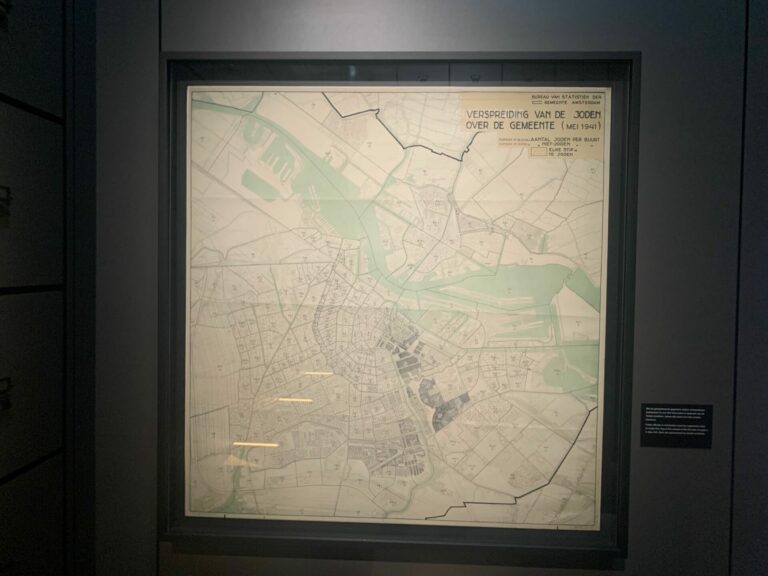
A 1941 map with the location of all the Jews in Amsterdam (each dot representing 10). This made it easier to round them up later. Evil doesn’t always come in a dramatic and cinematic form; sometimes it’s as banal as file cabinets and population maps.
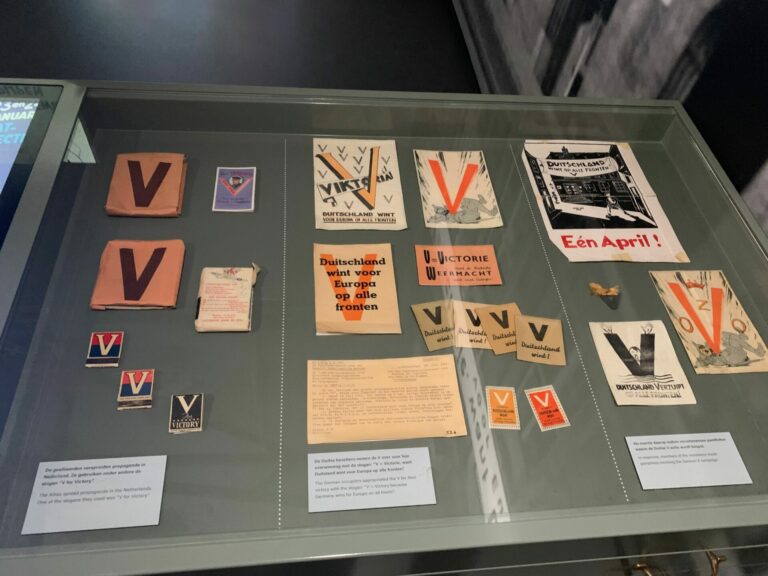
Allied leaflets dropped in 1945 ahead of the final victorious offensives.

Seyss-Inquart, the Nazi satrap of the Dutch Occupation, at the Nuremberg Trials, and me doing what would possibly have gotten me kicked out of the spectator gallery of said trials had I been there and not negative-20-something years old at the time.
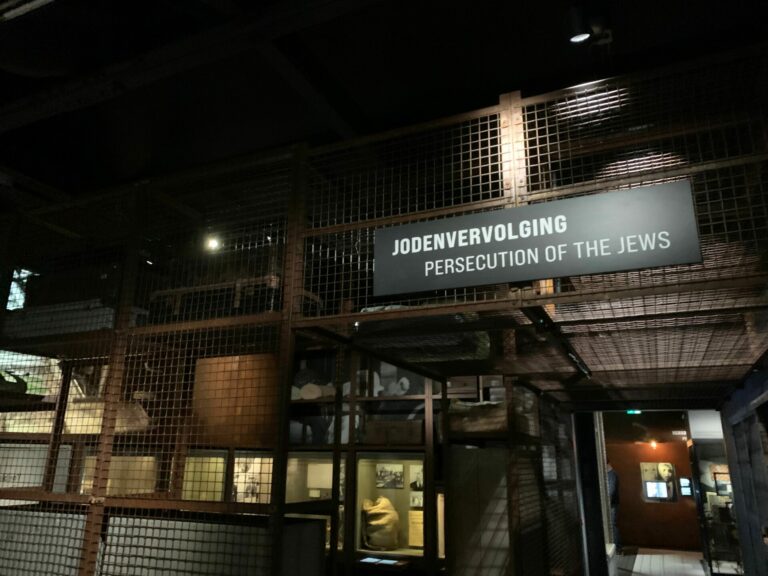
Entrance to the section of the museum on the persecution of the Jews. While some did what they could to aid the Jewish population, and many kept their heads down, there were enough people enticed by hate and/or greed (the reward for turning in a Jewish person was 7.50 guilders, which was a decent sum in those days) such that thousands suffered the same fate as Anne Frank.
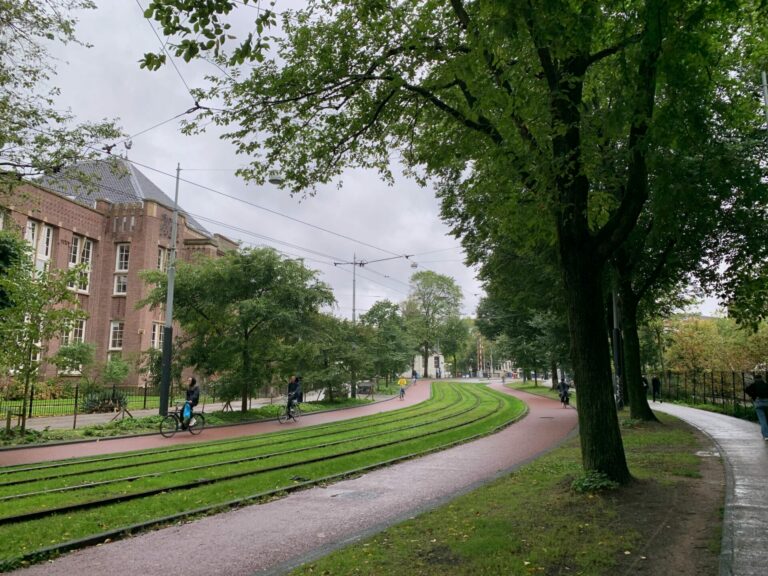
On my way back towards the hotel from the Verzetsmuseum (after stopping for necessary fries and a couple Chocomels–chocolate milk). This is a fine example of Dutch transit sensibilities at their best–a tree-lined sidewalk, a bike path, and tram tracks on grass. My relatives in Amsterdam said that there is talk of banning cars entirely from the center of the city, which would be absolutely delightful.
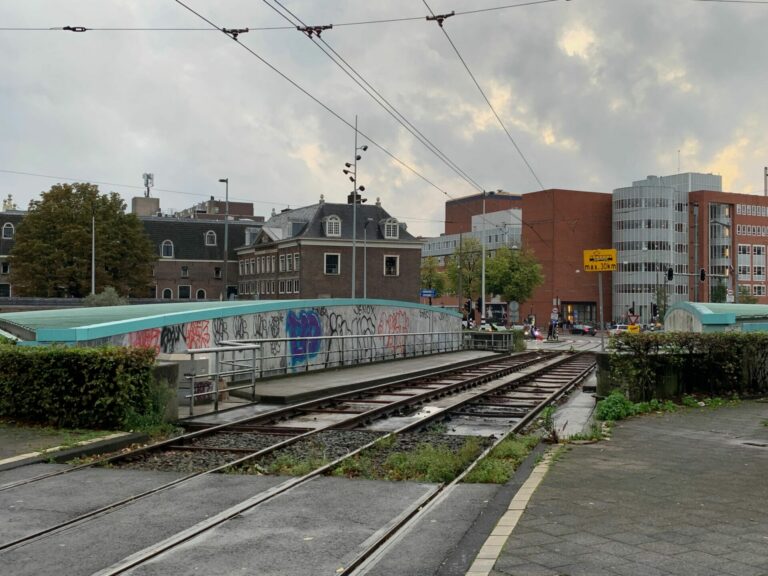
Tram tracks, with some of the ubiquitous Dutch graffiti.

WaterGirl
Scheduling mishap, sorry!
Wag
Looks like a really interesting museum. Sorry that we missed it when we were there. Oh well. Another excuse to return!
H.E.Wolf
Thank you for the photos, and for the memories of your indomitable Dutch relatives.
Betsy
Did you ride a bike? Life is so good on a Dutch bike!
Lacuna Synecdoche
Photo Caption via WaterGirl @ Top:
Signifiers that you’re over 50: Whenever you see the phrase “the Captain” you think, “Where’s Tennille?”
Also, from the Sentences I Never Thought I’d Read Department, Toni Tennille once said about one of their songs:
So do I, Toni, so do I.
way2blue
Captain, thank you for sharing a glimpse of your family’s history during those war-torn years.
mvr
FWIW, my dad was going to University in Delft when it was shut down over the issue of loyalty oaths. By the end of the war the Germans were drafting Dutch men into the army, so he needed false papers to go out and lived in a hidden apartment during that period. The story goes that there was a close call with shots fired and a house to house search but that they weren’t found.
Thanks for the post. I will look for that museum if I ever get out that way.
Captain C
@Wag: It’s very interesting, but you’ll definitely need some comfort food and/or a good coffeeshop session afterwards. Or both. Luckily, there are some nice cafes and De Overkant nearby.
Captain C
@H.E.Wolf: You’re welcome! We’re having a family reunion next year in Rotterdam which I’m hoping to make so I can meet some of those relatives (or see for the first time in years or decades).
Captain C
@Betsy: Not this time around. I’ve done so in the past, including as a teen at about 3am zipping back to my cousin’s pad from a night of dancing to newbeat music at the Melkweg (I was visiting for my grandparents’ 50th wedding anniversary, described on the invite as ’50 years of weddingexperience’). That night was also my first windowshopping experience in the red light district*.
ETA: *As have been all the rest. I’m all for consenting adults doing whatever as long as I don’t have to pay the hospital bill or deal with the cleanup, but the whole situation seems a bit too much like a Jiffy Lube for my tastes.
Captain C
@way2blue: You’re welcome. I’m glad that my Opa and Oom seem to have done something positive in those years. From what I hear, it was pretty damn scary.
I’ve also heard that they were able to survive the Hunger Winter because Opa worked for a pharmaceutical firm and was able to use the equipment to brew booze to trade for food.
Captain C
@mvr: I’m glad your dad escaped. It sounds like an experience Oom Bas had, minus the gunshots.
Definitely check out the museum, and as I wrote above, definitely have a comfort food and/or coffeeshop destination ready in your head for after.